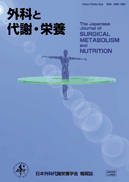Volume 56, Issue 2
Displaying 1-12 of 12 articles from this issue
- |<
- <
- 1
- >
- >|
-
2022 Volume 56 Issue 2 Pages 51-54
Published: April 15, 2022
Released on J-STAGE: May 15, 2022
Download PDF (746K) -
2022 Volume 56 Issue 2 Pages 55-58
Published: April 15, 2022
Released on J-STAGE: May 15, 2022
Download PDF (681K) -
2022 Volume 56 Issue 2 Pages 59-61
Published: April 15, 2022
Released on J-STAGE: May 15, 2022
Download PDF (644K) -
2022 Volume 56 Issue 2 Pages 62-64
Published: April 15, 2022
Released on J-STAGE: May 15, 2022
Download PDF (680K) -
2022 Volume 56 Issue 2 Pages 65-68
Published: April 15, 2022
Released on J-STAGE: May 15, 2022
Download PDF (737K) -
2022 Volume 56 Issue 2 Pages 69-72
Published: April 15, 2022
Released on J-STAGE: May 15, 2022
Download PDF (719K) -
2022 Volume 56 Issue 2 Pages 73-76
Published: April 15, 2022
Released on J-STAGE: May 15, 2022
Download PDF (677K) -
2022 Volume 56 Issue 2 Pages 77-80
Published: April 15, 2022
Released on J-STAGE: May 15, 2022
Download PDF (897K)
Original Article
-
2022 Volume 56 Issue 2 Pages 81-89
Published: April 15, 2022
Released on J-STAGE: May 15, 2022
Download PDF (998K) -
2022 Volume 56 Issue 2 Pages 90-97
Published: April 15, 2022
Released on J-STAGE: May 15, 2022
Download PDF (829K) -
2022 Volume 56 Issue 2 Pages 98-105
Published: April 15, 2022
Released on J-STAGE: May 15, 2022
Download PDF (784K)
-
2022 Volume 56 Issue 2 Pages K_2-
Published: April 15, 2022
Released on J-STAGE: May 15, 2022
Download PDF (672K)
- |<
- <
- 1
- >
- >|
